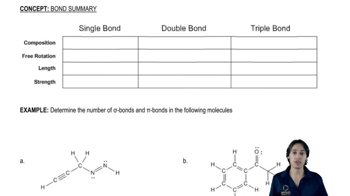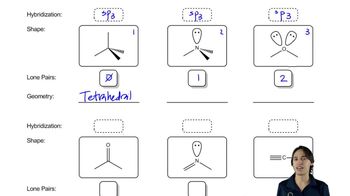Draw Lewis structures for the following compounds.
e. dimethylamine, CH3NHCH3
f. diethyl ether, CH3CH2OCH2CH3
g. 1-chloropropane,CH3CH2CH2Cl

 Verified step by step guidance
Verified step by step guidance Verified video answer for a similar problem:
Verified video answer for a similar problem:



 3:49m
3:49mMaster How to use Organic Chemistry to make Lewis Structures easier. with a bite sized video explanation from Johnny
Start learning